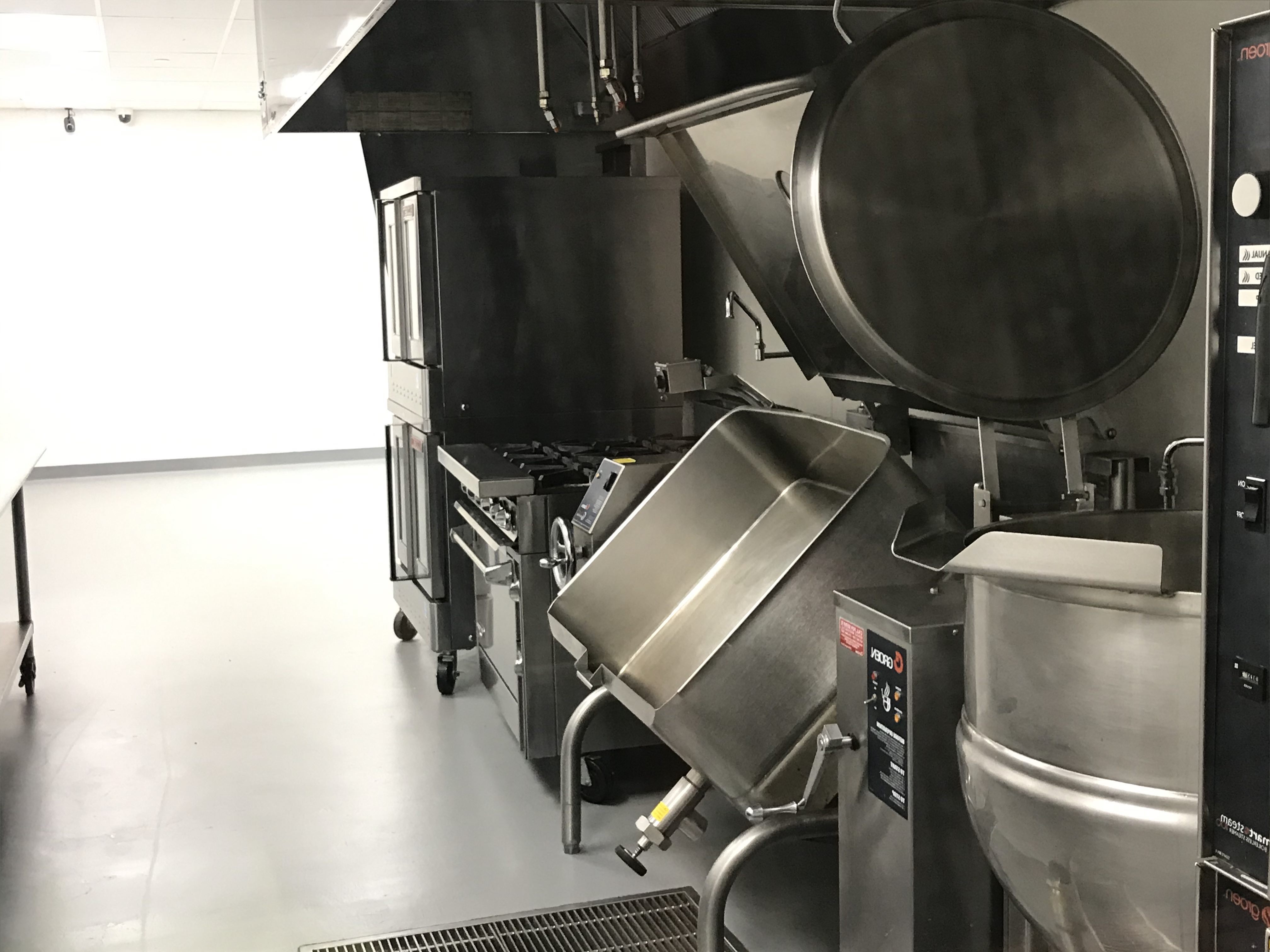MISSION
Provide a facility, support and structured growth pathway to enable food product companies to become sustainable and successful on Long Island.
OVERVIEW
The Calverton Food Incubator provides a shared-use commercial manufacturing kitchen for 20-C license holders in compliance with local and state ordinances and sanitary regulations. Member companies utilize this shared-use kitchen to prepare and produce food products as an integral part of their business. Dedicated storage and operations spaces are available as companies grow to enable a lower risk pathway of scaling business, with the ultimate objective of outgrowing the facility and becoming sustainable on Long Island.

The shared-use kitchen has 10 unique reservable operating areas with their own equipment in addition to common assets. There are two hot process lines, a baking area, a separate gluten-free kitchen, and a packaging area. Common assets include walk-in refrigeration and freezer space, blast chillers, dishwashing station, produce washing sink, and mobile steel tables.
This model allows farmers, start-ups and expanding businesses the opportunity to explore retail food production with less capital and risk. The University additionally provides access to technical and general business management education.
GROWTH PATH
Collaboration with food companies has led to the formulation of a structured pathway of growth for most early stage food venture. This pathway, from drive-in/drive-out manufacturing, to multi-room dedicated operational spaces allows low risk growth and preparation for graduation. Below is a brief overview of the operational stages of maturity for companies within the incubator.
Stage 1
- Transport all materials to the incubator
- Use Share-use Kitchen to produce and package product
- Leave incubator with all materials and product
Stage 2
- Begin to have delivered and store materials and assets at incubator
- Increase storage usage as business grows
- Storage solutions include dry, refrigerated, and freezer spaces
- Storage areas range from individual shelves to 64 square feet
Stage 3
- Acquire dedicate operating room for company
- Begin seeking economy of scale in operations
- Dedicated operations rooms range from 150 to 600 square feet
- Migrate from small to larger rooms as business grows
- Begin to accumulate assets and capital equipment
Stage 4
- Begin pricing out open-market operating spaces
- Identify assets needed for graduation
- Begin to accumulate needed assets and capital equipment aimed at external operations
- Model and modify operations and margin to support business in open-market facilities
- Graduate
Existing and established companies may also enter this pathway at any point in order to accomplish research and development, de-risk and prepare for the next phases of growth and innovation.
